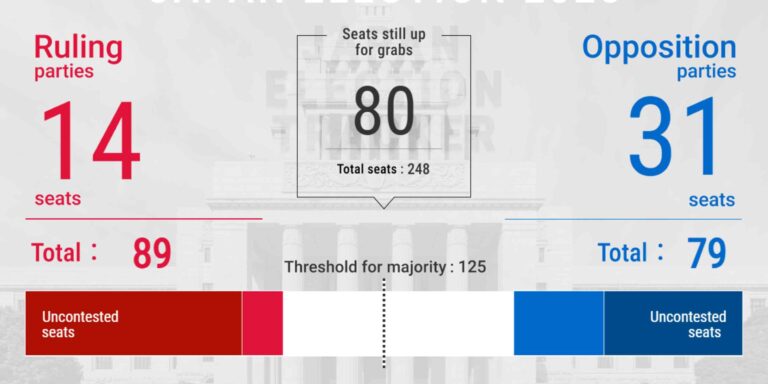TOKYO — The Japanese public voted on Sunday to determine the makeup of the nation’s upper house, in a crucial vote for Prime Minister Shigeru Ishiba, whose coalition is fighting to hold on to its majority — one that it lost in the lower chamber last autumn.
The race is set to be very unpredictable, with issues such as inflation, tax and immigration having dominated the campaign.
Here are some of our recent articles on this key election:
– What the upper house election means for Japan: 5 things to know
– Why the bond vigilantes are right about Japan’s election
– Japanese PM Ishiba has so far failed to resonate with voters
– Japan ruling coalition at risk of losing upper house in election: Nikkei poll
– Immigration becomes election issue in Japan amid tough economy
– Sanseito brings far-right populism to Japan
– Japan’s rice price shock exposes PM Ishiba to voter anger as election looms
Here’s the latest: (Japan time)
Sunday, July 20
8:35 p.m. Hiroshi Moriyama, the LDP’s secretary-general, avoided giving concrete comments on TV, saying that “Vote counts are still on going and I would like to refrain from commenting on the nature of responsibility at this time.”
8:26 p.m. The ruling coalition is projected to gain between 32~51 seats, according to NHK. Remember they need 50 to keep their majority.
The range of seats won for each party is:
Liberal Democratic Party (LDP): 27~41
Constitutional Democratic Party (CDP): 18~30
Japan Innovation Party: 6~9
Komeito: 5~12
Democratic Party For the People (DPFP): 14~21
Japanese Communist Party: 3~5
Reiwa: 2~4
Sanseito: 10~22
Conservative Party of Japan: 1~3
8 p.m. Voting ends. The ruling bloc is at risk of losing their upper house majority, national broadcaster NHK projected immediately after polls closed.
7:37 p.m. The latest data on voter turnout is out. As of 6 p.m., the national figure stood at 26.65%, down 0.71 percentage points from the 2022 upper house election.
7:13 p.m. Some errors have been made at polling stations, according to national broadcaster NHK. In Tokyo’s Ota ward, 25 voters were handed the wrong ballot sheets. In Saitama Prefecture’s Kasukabe city, there was a similar error involving ballot sheets for constituencies and proportional representation being mixed up. The affected votes could become invalid.
7:00 p.m. Just an hour to go now.
6:54 p.m. Japan’s lead tariff negotiator Ryosei Akazawa on Sunday told reporters that the election results will not affect talks with the U.S., according to Kyodo News. The upper house vote comes amid Tokyo’s continued efforts to reach a trade deal with Washington, which has slapped a 25% “reciprocal” tariff that goes into effect on Aug. 1.
6:30 p.m. Here’s a few photos from today:
6:15 p.m. The national voter turnout as of 4 p.m. stood at 22.42%, 0.57 percentage point lower than the previous upper house election three years ago, according to the Ministry of Internal Affairs and Communications. For Tokyo, it was 22.87% — 2.6 percentage points down.
According to government data, an estimated 26.18 million people participated in early voting, a record high and over 6.5 million more than in the previous upper house poll.
6 p.m. Just two hours now until voting ends. Exit polls and projections by major broadcasters will start coming in at 8 p.m., and will be updated frequently during the course of the evening as votes are counted.

